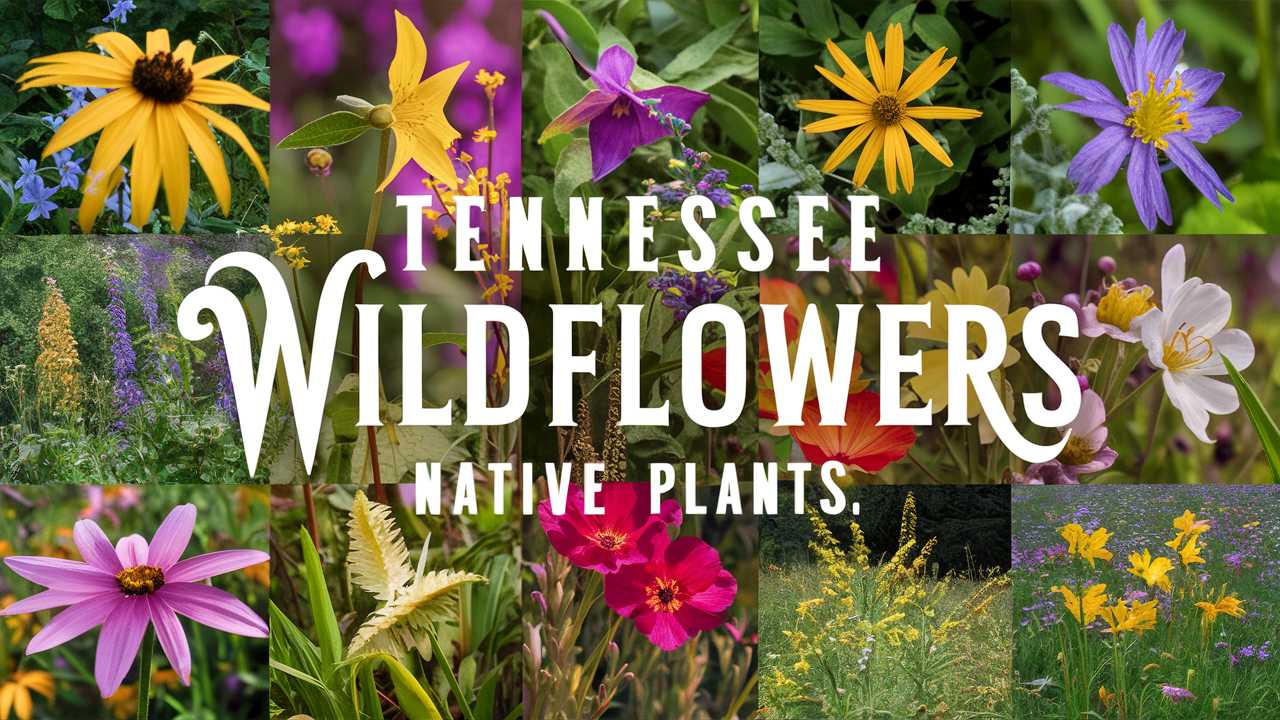In this guide, we’ll explore some of the most captivating wildflowers that grace the state. Each flower has its own unique characteristics and plays a crucial role in the ecosystem. Whether you’re a gardening enthusiast, nature lover, or simply curious about Tennessee’s flora, this guide will introduce you to these enchanting native plants.
Aromatic Aster (Symphyotrichum oblongifolium)
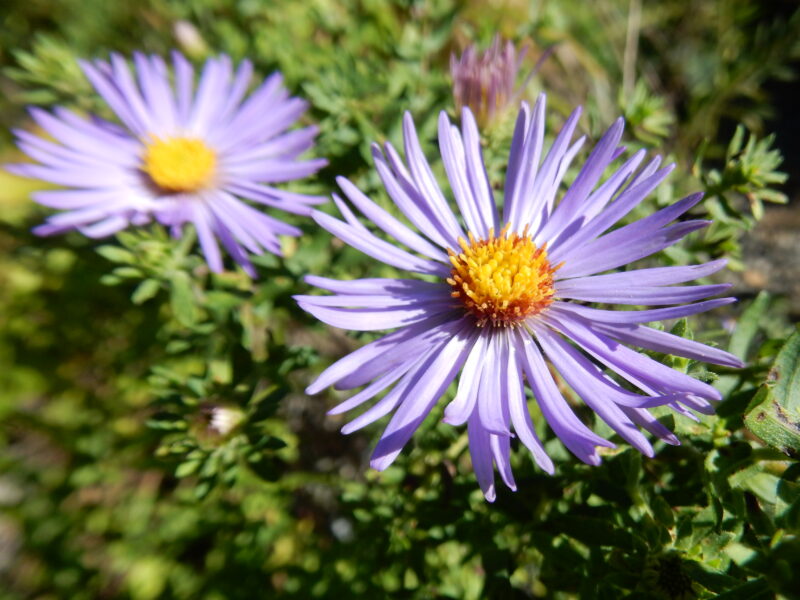
Aromatic Aster is a resilient perennial that blooms from late summer to fall, showcasing vibrant purple flowers with golden centers. This wildflower thrives in open fields, prairies, and along roadsides, often attracting a variety of pollinators, including bees and butterflies. Its aromatic leaves release a pleasant fragrance when disturbed, making it a delightful addition to gardens aiming to attract wildlife.
Adaptable and drought-tolerant, Aromatic Aster prefers full sun and well-drained soil. It usually grows between 1 to 3 feet tall and can spread efficiently, making it perfect for naturalizing larger landscapes. Beyond its aesthetic appeal, this wildflower provides essential nectar and pollen during late-season blooms when many other plants have finished flowering.
Black-Eyed Susan (Rudbeckia hirta)
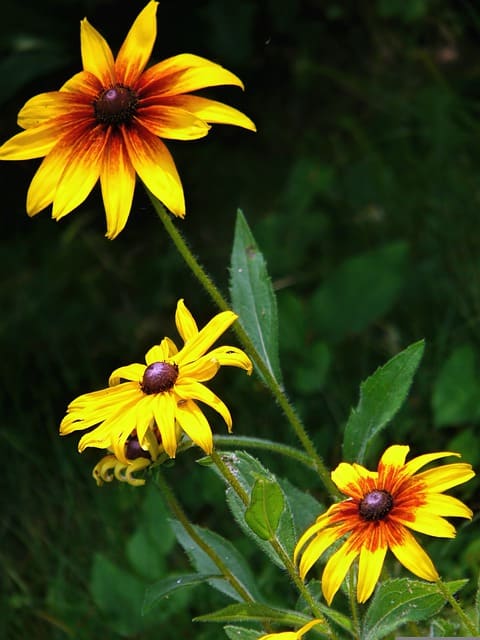
Black-Eyed Susan is perhaps one of the most recognizable wildflowers in Tennessee, with its cheerful yellow petals and dark brown centers. Blooming from June to October, these flowers prefer open fields, gardens, and roadsides, always bringing a splash of color wherever they grow.
This hardy perennial is known for its ability to grow in various soil types, although it thrives best in well-drained soil and full sun. Black-Eyed Susan reaches heights of 1 to 3 feet and serves as a beacon for butterflies and bees, supporting pollinator populations while also attracting seed-eating birds such as goldfinches in the fall. With its bright appearance and ability to flourish in poor soils, this wildflower is a favorite for both home gardens and wildflower meadows.
Butterfly Milkweed (Asclepias tuberosa)

Butterfly Milkweed is a striking perennial that stands out with its bright orange clusters of flowers. Blooming from late spring to mid-summer, it is not just a pretty flower but a crucial host plant for the elusive monarch butterfly. The plant is well-suited to dry, sandy soils and open areas, including prairies and fields.
The nectar-rich blooms attract various pollinators, making it an excellent choice for those looking to support local wildlife. Butterfly Milkweed typically grows 1 to 2 feet tall and prefers full sun. This wildflower also boasts a unique ability to store water, allowing it to thrive in less-than-ideal conditions. By planting this beautiful milkweed, gardeners can contribute to the preservation of monarch populations while enjoying its vibrant color.
Cardinal Flower (Lobelia cardinalis)
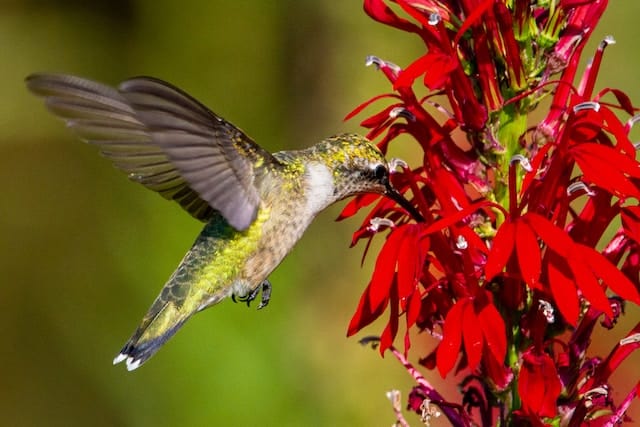
The Cardinal Flower captivates with its brilliant red tubular flowers, which bloom from mid-summer to early fall. This moisture-loving perennial thrives near streams, wetlands, and other damp locations, making it a perfect selection for rain gardens or shaded woodland edges.
Growing up to 4 feet tall, the Cardinal Flower attracts hummingbirds, bees, and butterflies, making it an excellent choice for anyone looking to enhance their garden’s biodiversity. Its striking appearance and unique habitat requirements render it an intriguing addition to any native plant landscape. With its brilliant hue reminiscent of a cardinal, this flower is sure to draw attention and admiration.
Coral Honeysuckle (Lonicera sempervirens)
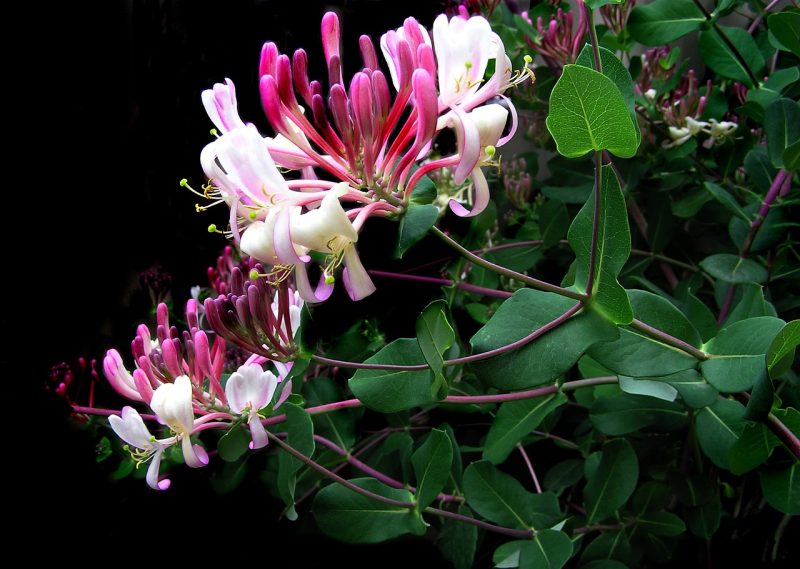
Coral Honeysuckle is a climbing vine that enchants with its tubular coral-red flowers, blooming from spring to early summer. It’s found in a variety of habitats, including forests, hedgerows, and disturbed areas, bringing beauty and attracting pollinators like hummingbirds and butterflies.
This vine is versatile and can be grown on trellises, fences, or allowed to cascade over walls, making it a popular choice for gardeners looking to add height and interest to their landscape. Coral Honeysuckle thrives in full sun to partial shade and prefers well-drained soil but is tolerant of various soil types. Its fragrant flowers and ability to thrive with minimal maintenance make it an excellent choice for both urban and rural gardens.
Dwarf Crested Iris (Iris cristata)
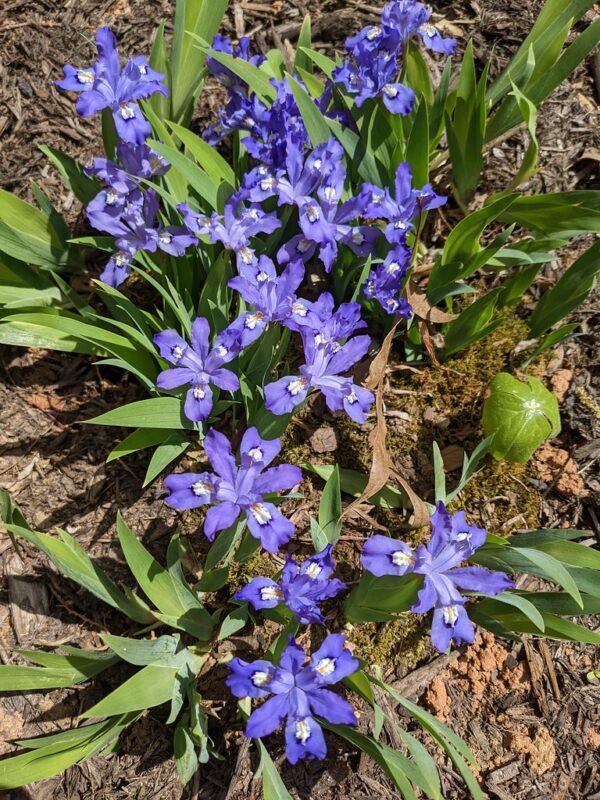
The Dwarf Crested Iris is a petite perennial that brings delicate beauty to the woodland understory. Blooming in spring, its small but vibrant blue to purple flowers appear among attractive green foliage, creating an enchanting display. This species prefers shaded environments, often found in rich woodlands or along stream banks.
Growing only 6 to 12 inches tall, it makes an ideal ground cover and is perfect for shady spots in gardens. Its adaptability to moist, well-drained soils and low maintenance requirements make it a favorite for natural gardens. Dwarf Crested Iris provides essential nectar for early-spring pollinators, contributing to the biodiversity that sustains woodland ecosystems.
Eastern Columbine (Aquilegia canadensis)
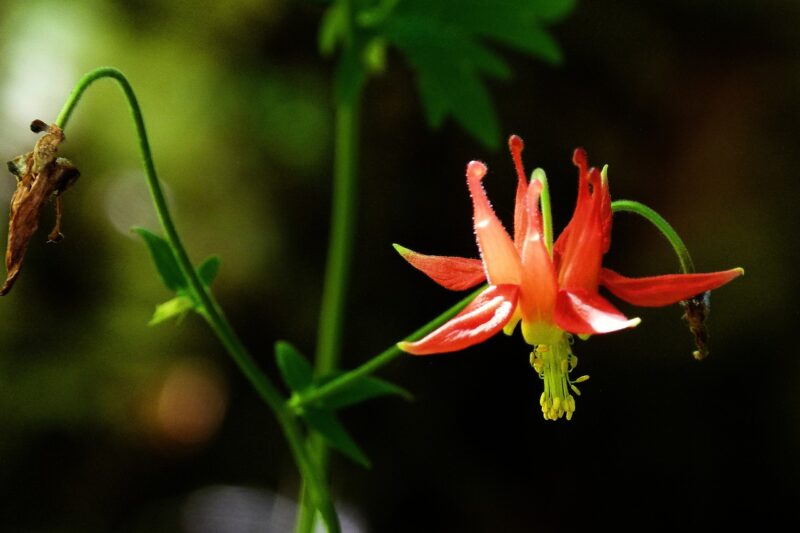
Eastern Columbine, with its unique, spurred flowers in shades of red and yellow, is a native perennial that thrives in woodland edges and open areas. Blooming from April to June, it attracts hummingbirds and butterflies with its nectar-rich blooms.
This plant typically reaches heights of 1 to 3 feet and prefers partial shade and well-drained soil. Eastern Columbine’s distinctive flowers and foliage make it an attractive addition to any garden, particularly those focused on attracting pollinators. Gardeners can find joy in watching hummingbirds dart to this flower, knowing they are enhancing local wildlife.
Foxglove Beardtongue (Penstemon digitalis)
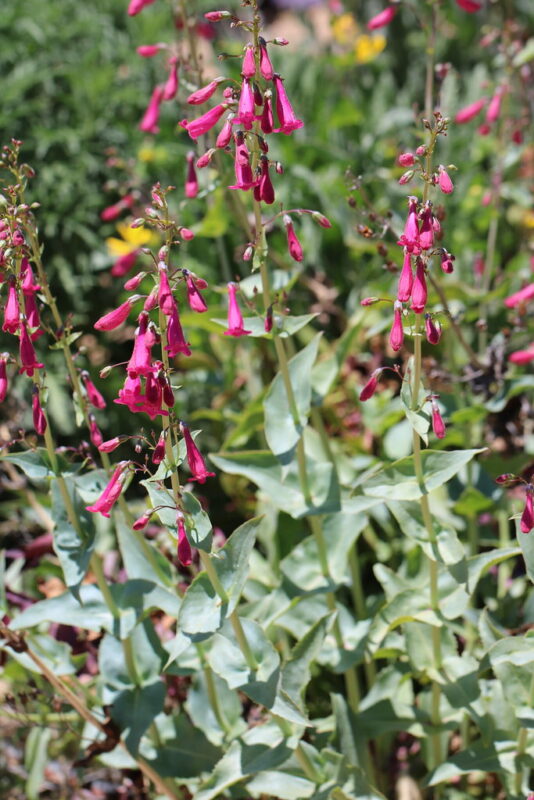
Foxglove Beardtongue is a charming perennial known for its tall spikes adorned with white to pale lavender tubular flowers that bloom from late spring to early summer. This flower thrives in open woodlands, meadows, and along roadsides, adding vertical interest to landscapes.
Growing 2 to 4 feet tall, it is excellent for back borders in gardens and attracts a wide range of pollinators, including bees and butterflies. Foxglove Beardtongue prefers full sun to partial shade and well-drained soil, making it versatile for different garden settings. Beyond its visual allure, this native plant supports the health of local pollinator populations, making it a prized addition to any garden.
Great Blue Lobelia (Lobelia siphilitica)
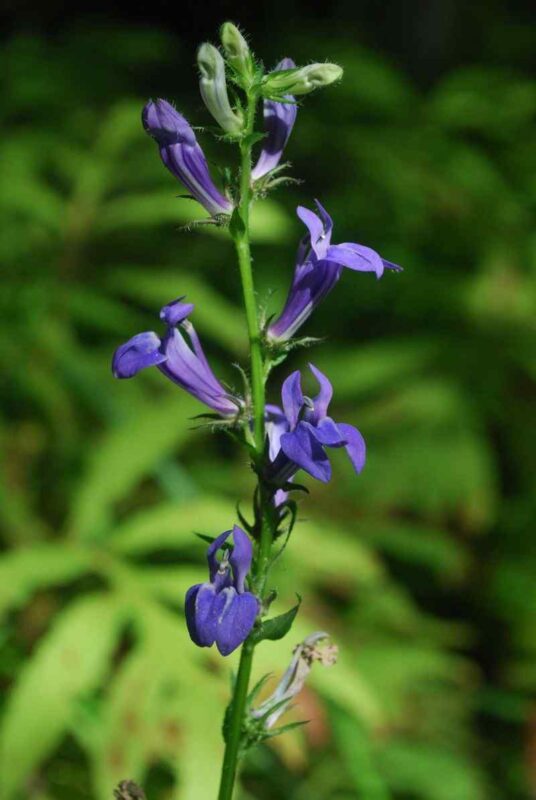
Great Blue Lobelia is a captivating wildflower that adds a vibrant blue hue to Tennessee’s landscapes. Its tubular flowers bloom from late summer to early fall, and it thrives near moist areas such as stream banks and wetlands.
Reaching heights of 1 to 3 feet, this perennial creates stunning floral displays and is known for its ability to attract pollinators, particularly bees and butterflies. Gardens featuring Great Blue Lobelia should have partial shade and consistently moist soil to mimic its natural habitat. This plant not only enhances the beauty of gardens but also plays a vital role in supporting the health of the local ecosystem.
Lanceleaf Coreopsis (Coreopsis lanceolata)
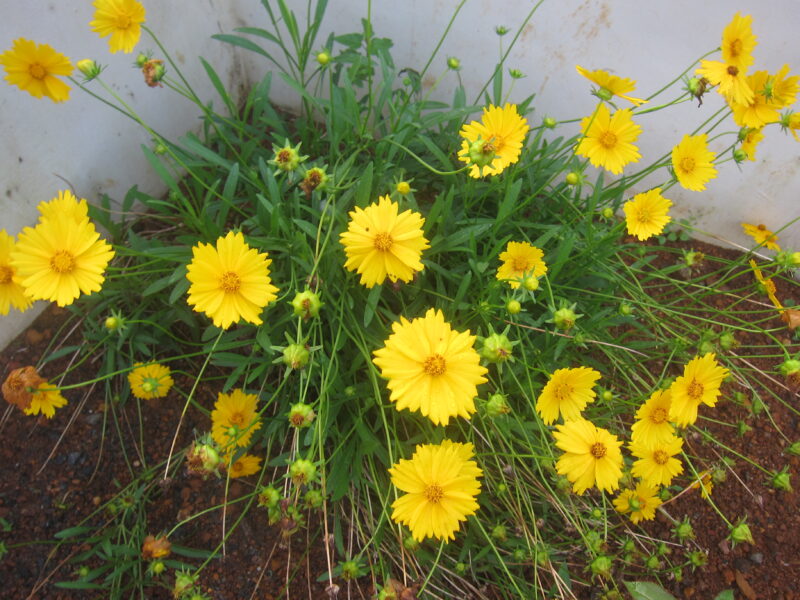
Lanceleaf Coreopsis is a hardy perennial known for its bright yellow, daisy-like flowers that bloom from late spring to early summer. Found in prairies, meadows, and open woods, these cheerful wildflowers add a sunny look to the landscape and are resilient to drought conditions.
Growing 1 to 2 feet tall, this flower thrives in full sun and well-drained soil. Its attractive foliage and abundant blooms make it a favorite for gardeners seeking to create vibrant wildflower meadows. Lanceleaf Coreopsis attracts a variety of pollinators, including butterflies and bees, playing an essential role in supporting local wildlife while filling gardens with color.
Nodding Onion (Allium cernuum)
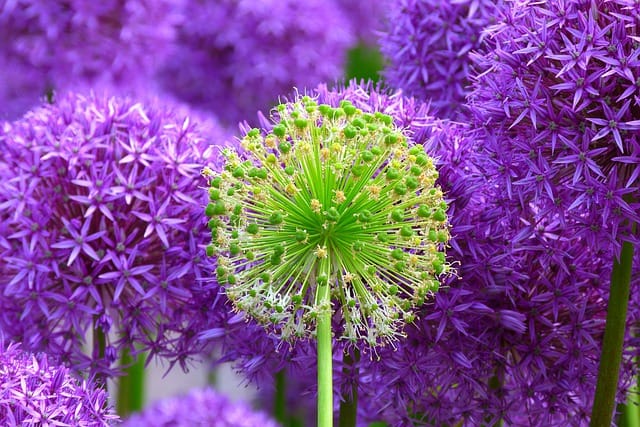
Nodding Onion is a delightful native wildflower that features delicate, pink to white globular flower clusters on slender stems. Blooming from late spring to early summer, this plant prefers well-drained soils and grassy open areas, imparting its whimsical charms to landscapes.
Standing around 1 to 2 feet tall, Nodding Onion is sometimes overlooked but makes a remarkable addition to any native garden. Its flowers are not just attractive; they’re also edible and can be used in salads or as a garnish. The plant attracts a range of pollinators, including bees and butterflies, enhancing the biodiversity in gardens.
Oxeye Sunflower (Heliopsis helianthoides)
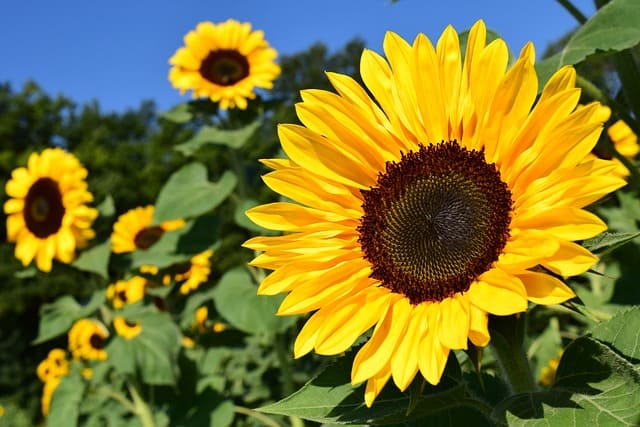
Oxeye Sunflower, a perennial indeed worthy of praise, dazzles with its bright yellow flowers from summer through autumn. Typically found in meadows, roadsides, and open woodlands, this cheerful bloom stands tall, reaching 2 to 4 feet in height, creating impressive floral displays.
This hardy plant thrives in full sun and is well-suited for various soil types, making it an adaptable choice for gardens. Besides its visual appeal, the flowers are a valuable food source for pollinators, providing nectar that attracts bees, butterflies, and other beneficial insects. The Oxeye Sunflower not only brightens landscapes but also plays a critical role in supporting the local ecosystem.
Purple Coneflower (Echinacea purpurea)
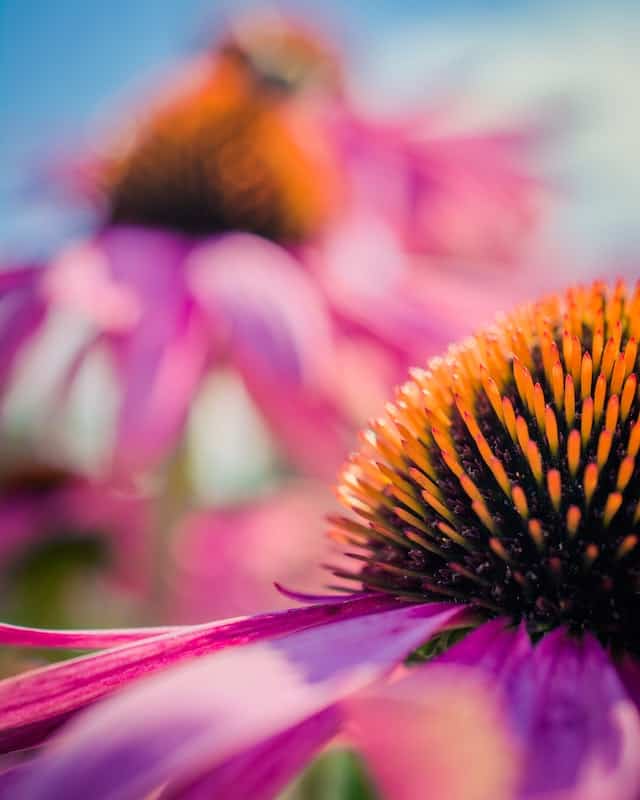
Purple Coneflower is a favorite among wildflower enthusiasts for its striking, spiky purple petals surrounding an orange central cone. Blooming from mid-summer to fall, this perennial is commonly found in meadows and open woods, flourishing in sunny spots with well-drained soil.
Reaching heights of 2 to 4 feet, Purple Coneflower is not only beautiful but also incredibly resilient, often attracting not only pollinators but also birds in the fall when the seed heads become a food source. It’s cherished in cottage gardens and natural landscapes alike for its vibrant color, ability to attract butterflies, and ease of care. Plus, it’s even been praised for its medicinal properties!
Rose Verbena (Glandularia canadensis)
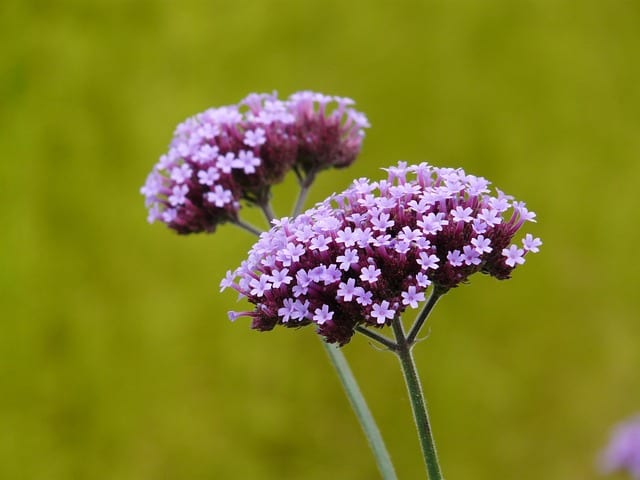
Rose Verbena, with its clusters of small, vivid pink to lavender flowers, is a perennial that blooms from spring through fall. This wildflower is found in fields, roadsides, and disturbed sites, often creating stunning ground cover that thrives in sunny areas.
Growing 1 to 2 feet tall, Rose Verbena is drought-resistant and adaptable, making it a great choice for low-maintenance gardens. Its flowers attract a variety of pollinators and provide important nectar sources during the growing season. This vibrant plant not only enhances curb appeal but also promotes biodiversity by supporting bees, butterflies, and other beneficial insects.
Rough Blazing Star (Liatris aspera)
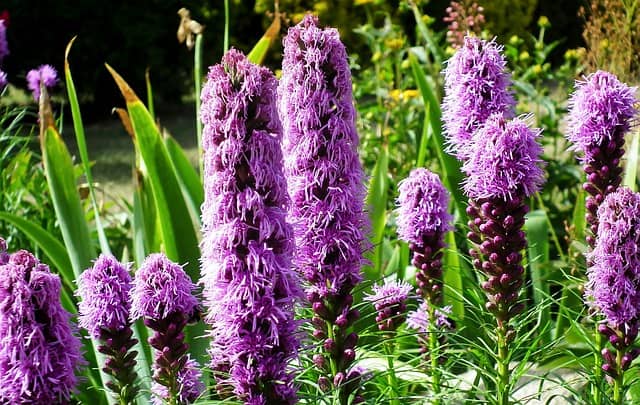
Rough Blazing Star is a striking native wildflower known for its tall spikes covered in clusters of purple flowers that appear in late summer and fall. This plant typically thrives in prairies and open woods, and its unique spiky shape makes it a stand-out addition to any wildflower garden.
Reaching up to 2 feet in height, Rough Blazing Star prefers dry, well-drained soils and full sun. It is an excellent nectar source for butterflies, especially during the late summer months when other flowers have faded. Including this wildflower in gardens supports pollinator habitats while providing a splendid display of color.
Slender Mountain Mint (Pycnanthemum tenuifolium)

Slender Mountain Mint is a lesser-known but enchanting perennial that produces clusters of tiny white to pale purple flowers. Blooming from mid-summer to early fall, this plant is prized for its fragrant foliage, often found in meadows, prairies, and rocky slopes.
Growing about 1 to 2 feet tall, Slender Mountain Mint thrives in full sun and tolerates dry conditions. Its aromatic leaves release a pleasant minty scent, which attracts various pollinators, including bees and butterflies, contributing to a vibrant ecosystem. This wildflower is perfect for naturalizing smaller areas and enhances gardens with its unique attributes.
Swamp Milkweed (Asclepias incarnata)
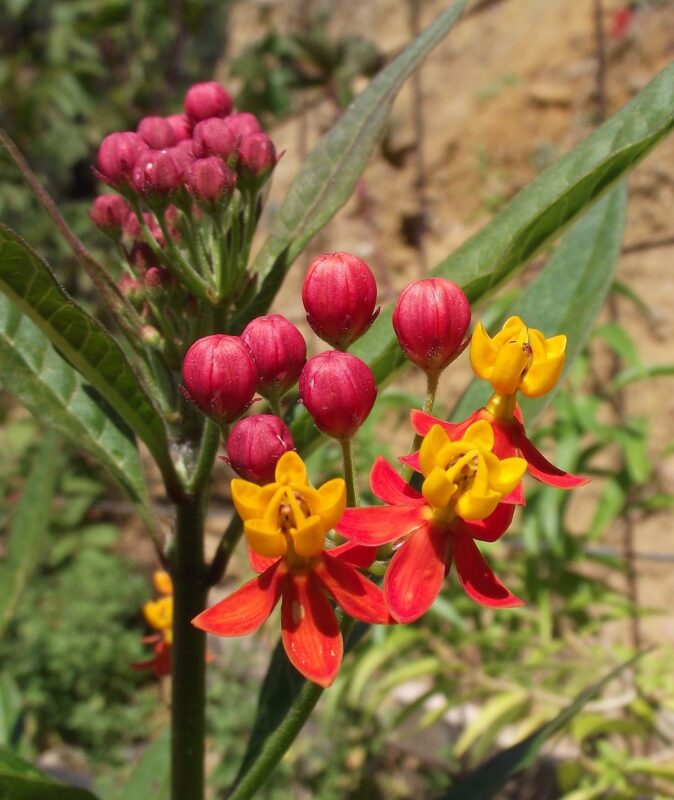
Swamp Milkweed, with its clusters of lovely pink flowers, is a staple in wetland areas, making it an excellent choice for rain gardens or boggy spots. Blooming from mid-summer to fall, this perennial is crucial for monarch butterflies, serving as both a nectar source and a host plant for their larvae.
Reaching heights of 2 to 4 feet, Swamp Milkweed prefers moist, well-drained soils and full sun to partial shade. Its vibrant blooms attract a wide range of pollinators while providing essential habitat for butterflies. Planting Swamp Milkweed not only enhances beauty but also supports biodiversity by inviting essential pollinators.
Virginia Bluebells (Mertensia virginica)
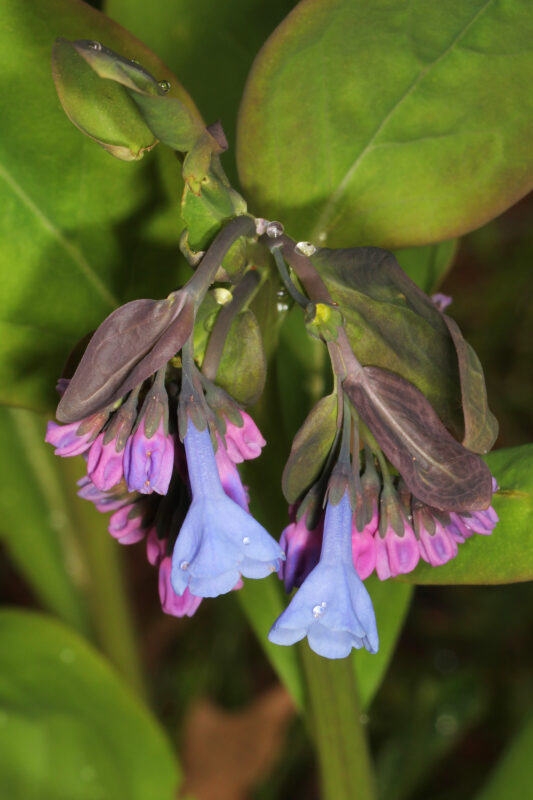
Virginia Bluebells are a breathtaking sight in the spring, carpeted across woodland floors with their bell-shaped blue flowers. These ephemeral perennials bloom from early spring to early summer, creating a stunning display before their foliage dies back in the summer.
Reaching 1 to 2 feet in height, Virginia Bluebells thrive in moist, rich soils under full to partial shade. Their early blooms provide vital food for emerging pollinators, making them critical in supporting early-spring ecosystems. Gardeners cherish these for their unique hue and delicate appearance, perfect for shaded gardens or naturalized areas.
Whorled Milkweed (Asclepias verticillata)
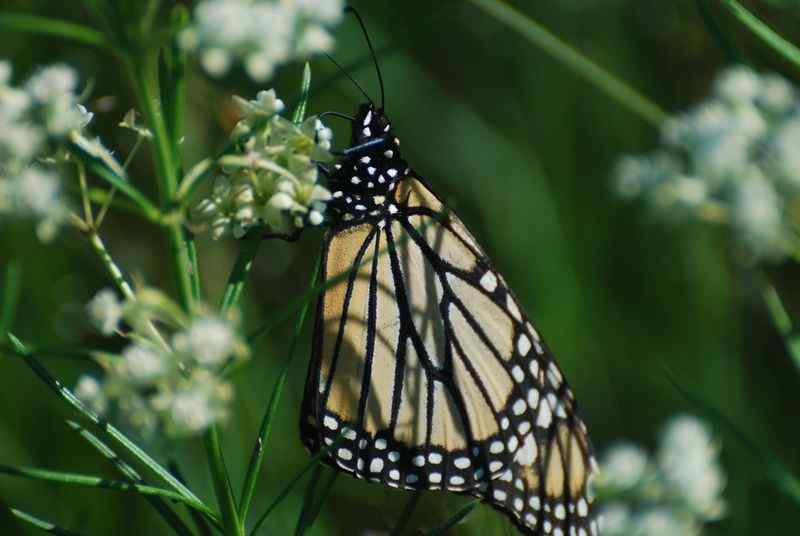
Whorled Milkweed is a distinctive perennial wildflower characterized by its whorled leaves and clusters of white flowers that bloom in mid-summer. This plant thrives in dry, open fields and prairies, making it well-suited for natural landscapes that may not retain moisture.
Growing to about 1 to 2 feet tall, Whorled Milkweed is a valuable resource for pollinators, particularly monarch butterflies and other insects that rely on milkweed species. Its adaptability and unique foliage make it a fascinating addition to gardens focused on biodiversity. These flowers not only beautify the landscape but play a crucial role in maintaining healthy ecosystems.
Wild Bergamot (Monarda fistulosa)
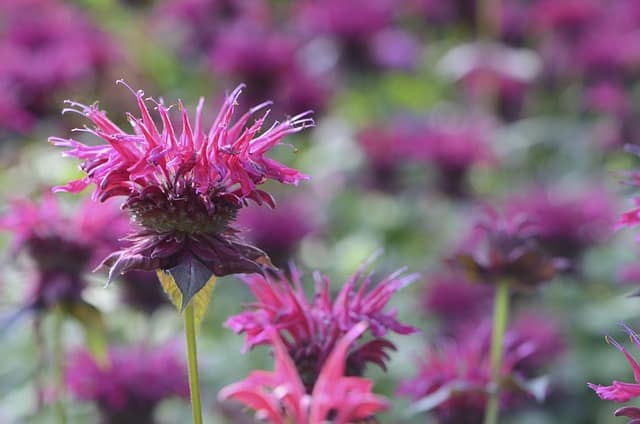
Wild Bergamot, with its vibrant lavender blooms and aromatic foliage, adds an explosion of color to meadows and open woodlands. Known for its unique appearance, the plant blooms from mid-summer to early fall, attracting a range of pollinators, including bees, butterflies, and hummingbirds.
This perennial grows 2 to 4 feet tall and thrives in well-drained soil and full sun to partial shade. Wild Bergamot is not only a feast for the eyes, but its leaves are also fragrant and can be used to make soothing herbal teas. The plant’s ability to support diverse wildlife while providing aromatic value makes it a favorite among gardeners who appreciate both beauty and functionality.
Woodland Phlox (Phlox divaricata)
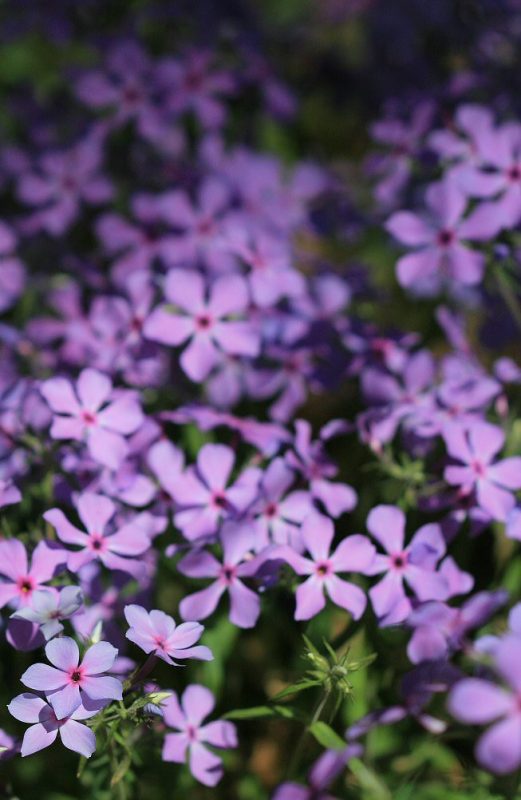
Woodland Phlox is a charming perennial that adorns shaded gardens with its delicate clusters of star-shaped flowers. Blooming from spring to early summer, its vibrant blue, pink, or white flowers create a carpet of color in woodlands or shaded areas.
Reaching heights of 1 to 2 feet, Woodland Phlox thrives in well-drained, moist soil and partial to full shade. This plant is beneficial for early-season pollinators, providing crucial nectar sources when other flowers are not yet in bloom. Its elegant form and ability to thrive in challenging conditions make it a must-have for any native garden.
Conclusion: Cherishing Tennessee’s Native Flora
Tennessee’s wildflowers offer not only aesthetic beauty but also play vital roles in supporting local ecosystems. By cultivating native plants like Aromatic Aster, Black-Eyed Susan, and Purple Coneflower, gardeners can help enhance biodiversity, attract pollinators, and preserve the unique character of the state’s flora.


